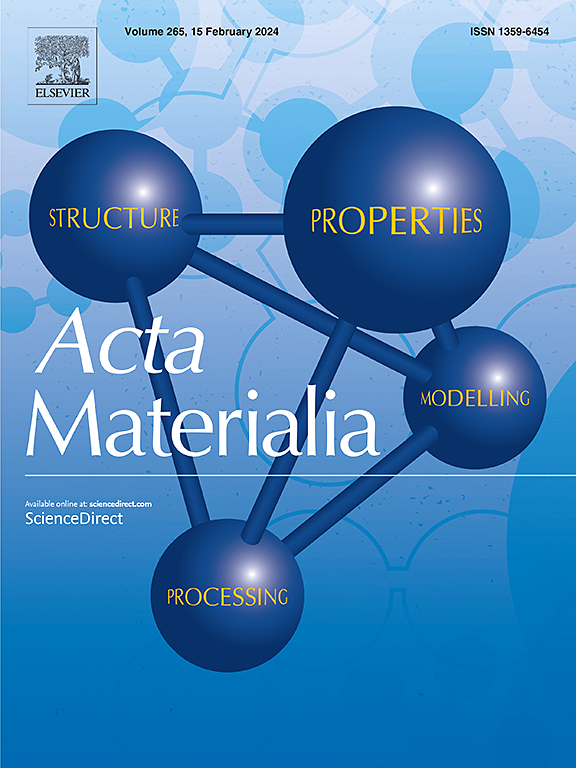Mg-2Zn-0.1Ca合金板材变形行为:应变速率的作用
IF 9.3
1区 材料科学
Q1 MATERIALS SCIENCE, MULTIDISCIPLINARY
引用次数: 0
摘要
材料的延展性通常表现出强烈的应变率依赖,由潜在的变形机制和应变非均质性决定。本研究探讨了Mg-2Zn-0.1Ca合金板材在两种应变速率(1 × 10⁻5⁻1和1 × 10⁻5⁻1)下的变形行为。高分辨率数字图像相关测量显示,即使在张力的早期阶段,也存在显著的应变非均质性(ε = 2%)。与预期相反,较高的应变率并没有放大这些异质性。滑痕量分析演示了一个过渡变形模式在应变率:基底滑移(ε = 2%) → 基底滑移 + non-basal滑 + 孪生(ε = 7%)。值得注意的是,在较高应变速率下测试的样品表现出更高的棱柱滑移体系和锥体滑移体系的活性。高应变速率测试样品在棱柱和锥体滑移体系中表现出增强的活性。在高应变率样品中检测到更高密度的非基底位错,可能会增强应力集中并引发过早开裂。此外,对基底滑移的几何相容性因子的评估表明,在较高的应变速率下,滑移可转移性降低。滑移转移性的降低和非基底位错密度的增加被认为是在高应变率下观察到的延性降低的关键因素。本文章由计算机程序翻译,如有差异,请以英文原文为准。


The deformation behavior of Mg-2Zn-0.1Ca alloy sheet: The role of strain rate
Ductility in materials often exhibits a strong dependence on strain rate, governed by underlying deformation mechanisms and strain heterogeneity. This study explores the deformation behavior of a Mg-2Zn-0.1Ca alloy sheet under two strain rates (1 × 10⁻⁵ s⁻¹ and 1 × 10⁻¹ s⁻¹). High-resolution digital image correlation measurements revealed significant strain heterogeneities, even in early stage of tension (ε = 2 %). Contrary to expectations, higher strain rates did not amplify these heterogeneities. Slip trace analysis demonstrated a transition in deformation modes at both strain rates: basal slip (ε = 2 %) → basal slip + non-basal slip + twinning (ε = 7 %). Notably, the sample tested at the higher strain rate exhibited higher activity of prismatic and pyramidal slip systems. The high-strain-rate tested sample exhibited enhanced activity in prismatic and pyramidal slip systems. A higher density of non-basal dislocations in the high-strain-rate sample was detected, potentially enhancing stress concentration and initiating premature cracking. Moreover, evaluation of the geometric compatibility factor for basal slip indicated reduced slip transferability at higher strain rates. The combined effects of reduced slip transferability and increased non-basal dislocation density is identified as a key factor in the reduced ductility observed at high strain rates.
求助全文
通过发布文献求助,成功后即可免费获取论文全文。
去求助
来源期刊

Acta Materialia
工程技术-材料科学:综合
CiteScore
16.10
自引率
8.50%
发文量
801
审稿时长
53 days
期刊介绍:
Acta Materialia serves as a platform for publishing full-length, original papers and commissioned overviews that contribute to a profound understanding of the correlation between the processing, structure, and properties of inorganic materials. The journal seeks papers with high impact potential or those that significantly propel the field forward. The scope includes the atomic and molecular arrangements, chemical and electronic structures, and microstructure of materials, focusing on their mechanical or functional behavior across all length scales, including nanostructures.
 求助内容:
求助内容: 应助结果提醒方式:
应助结果提醒方式:


